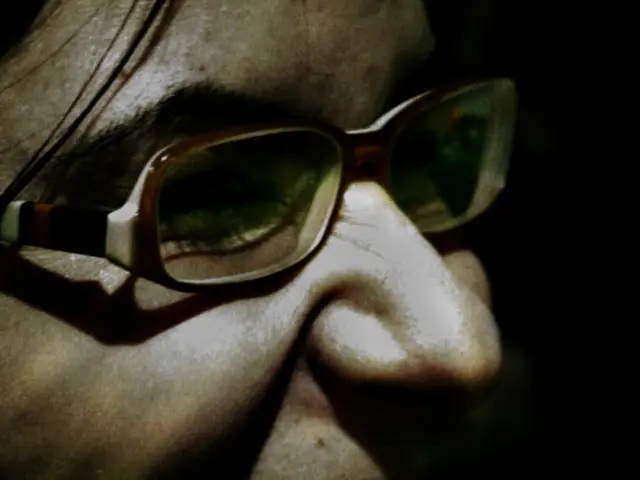Mental Health Advocacy: The Semicolon Represents Persistence Against Mental Struggles
In the vast expanse of mental health conversations, few emblems have gained as much traction and significance as the humble semicolon. This little punctuation mark has transcended its grammatical role to become a potent symbol of hope, resilience, and camaraderie for those experiencing mental health challenges. The semicolon project, sprouting from a grassroots movement, has grown into a global movement, touching the lives of countless individuals and sparking crucial discussions about mental health.
Embracing the Semicolon: A Symbol of Resilience in Mental Health Struggles
At heart, the PUA of the semicolon in mental health carries a profound yet impactful message. In writing, a semicolon represents a pause in a sentence, not a final stop. Translated to the realm of mental health, it symbolizes that one's story is merely paused, not concluded.
For those battling mental health issues, like depression, this semicolon serves as a powerful badge of courage. It encourages them to view their battles as a detour, not a condemnation. This shift in perspective can be empowering, offering hope during troubling times and nudging them forward in their struggle.
The correlation between punctuation and mental health struggles might strike as an unusual link. Yet, it's precisely this unforeseen connection that makes the semicolon such a compelling symbol. It brings a small, everyday element and fills it with powerful meaning, thus becoming relatable and accessible to a broad audience.
By opting to continue their narrative through the semicolon, individuals make a determined statement of persistence and hope, reinforcing the idea that they control their destiny, even in the face of mental health tribulations.
The Global Mental Health Awareness Movement – Semicolon Unleashed
The origins of the depression-centric semicolon movement date back to 2013 with the inception of Project Semicolon, launched by mental health advocate Amy Bleuel, who had lost her father to suicide and grappled with her mental health struggles.
Leveraging the might of social media, Project Semicolon gained traction swiftly, primarily due to its powerful message. Platforms like Instagram, Twitter, and Facebook transformed into conduits for spreading awareness about mental health through semicolon-themed tattoos, artwork, and personal stories.
The impact of the semicolon movement on mental health stigma reduction has been significant. By providing a visible, easily recognizable symbol, it has facilitated mental health conversations to enter mainstream discussions. The semicolon has become a conversation-starter, enabling people to talk about mental health without shame.
The Eternal Ink – Semicolon Tattoos: A Lasting Reminder of Strength
One of the most visible expressions of the semicolon movement is the popularity of semicolon tattoos. Born as reminders of personal battles won, these tattoos have become a way for survivors of mental health challenges and their allies to signify solidarity and raise awareness.
For many, the semicolon tattoo symbolizes their personal battles conquered and resilience showcased. It stands as a testament to their will to continue in the face of adversity. Some choose to incorporate the semicolon into elaborate designs, while others opt for a straightforward, solitary punctuation mark.
These tattoos often come with heartfelt backstories. Some choose to commemorate lost loved ones or their own journey through mental health struggles, while others adopt it as a means to exhibit support for friends or family members grappling with mental health issues.
Beyond personal significance, semicolon tattoos serve as conversation starters about mental health. They offer a platform for individuals to share their experiences, educate others, and contribute to the discourse on mental health awareness.
Moving Beyond Depression – The Broader Implications of the Semicolon
Although the semicolon is commonly associated with depression and suicide prevention, its application transcends these boundaries. Those dealing with anxiety, PTSD, eating disorders, and other mental health afflictions have also adopted the symbol.
The semicolon's message of continuity and hope resonates across various mental health landscapes. It champions overall mental wellness by nudging individuals to pause, reflect, and decide to continue their quest toward better mental health.
Yet, it's crucial to acknowledge that the semicolon movement has faced criticism. Some argue it oversimplifies complex mental health issues, while others worry it might trivializes severe mental health conditions. Despite these concerns, countless individuals find solace and encouragement in the symbol.
The Remarkable Endurance of the Semicolon Movement
The semicolon movement has left an indelible impact on the mental health discussion. It has established a visual language for discussing mental health, making these conversations more accessible and less daunting. The symbol has been adopted by various mental health initiatives, from awareness campaigns to support groups.
Social media maintains a critical role in disseminating the message of the semicolon project. Hashtags like #semicolonproject and #mystoryisntoveryet create virtual communities where people can express their experiences, extend support, and discover resources.
The semicolon has also inspired other mental health symbols and initiatives. For instance, the green ribbon has been adopted as a symbol for depression awareness, while an assortment of mental health tattoo ideas have gained popularity as channels to express support and awareness.
As we endeavor to tackle mental health challenges at a worldwide scale, symbols like the semicolon prove indispensable in fostering understanding and empathy. They remind us of the significance of mental health awareness and the power of community support.
The semicolon movement compels us to be more open about mental health, to seek help when required, and to support those struggling around us. It serves as a rallying cry, urging us to continue the discussion on mental health and strive for a world where mental health is accorded the same importance as physical health.
In summary, the semicolon has emerged as a resilient symbol of hope and tenacity in the encounter with mental health challenges. From its humble origins as a grassroots movement to its current status as a globally accepted emblem, the semicolon persists to inspire and support individuals in their mental health journeys onward. As we progress, let us embrace the message of the semicolon alongside us: our stories are not over, and hope thrives amid adversity.
Sources
1.Project Semicolon. (2021). Our Story. Retrieved from https://projectsemicolon.com/our-story/2.National Alliance on Mental Illness. (2021). Mental Health By the Numbers. Retrieved from https://www.nami.org/mhstats3.American Foundation for Suicide Prevention. (2021). Suicide Statistics. Retrieved from https://afsp.org/suicide-statistics/4.World Health Organization. (2021). Depression. Retrieved from https://www.who.int/news-room/fact-sheets/detail/depression5.Mental Health America. (2021). The State of Mental Health in America. Retrieved from https://mhanational.org/issues/state-mental-health-america6.National Institute of Mental Health. (2021). Mental Health Information. Retrieved from https://www.nimh.nih.gov/health/topics/index.shtml7.Substance Abuse and Mental Health Services Administration. (2021). National Survey on Drug Use and Health. Retrieved from https://www.samhsa.gov/data/release/2019-national-survey-drug-use-and-health-nsduh-releases8.American Psychological Association. (2021). Mental Health. Retrieved from https://www.apa.org/topics/mental-health
- In its broader implications, the semicolon extends its resonance to individuals dealing with various mental health afflictions, such as anxiety, PTSD, eating disorders, signifying the message of continuity and hope across diverse mental health landscapes.
- Keeping mental wellness at the forefront, the green ribbon has emerged as a symbol for depression awareness, joining the pantheon of mental health symbols inspired by the semicolon movement.
- As mental health conversations evolve, various mental health tattoo ideas have grown popular, allowing individuals to visualize their resilience, solidarity, and commitment to mental health awareness.








